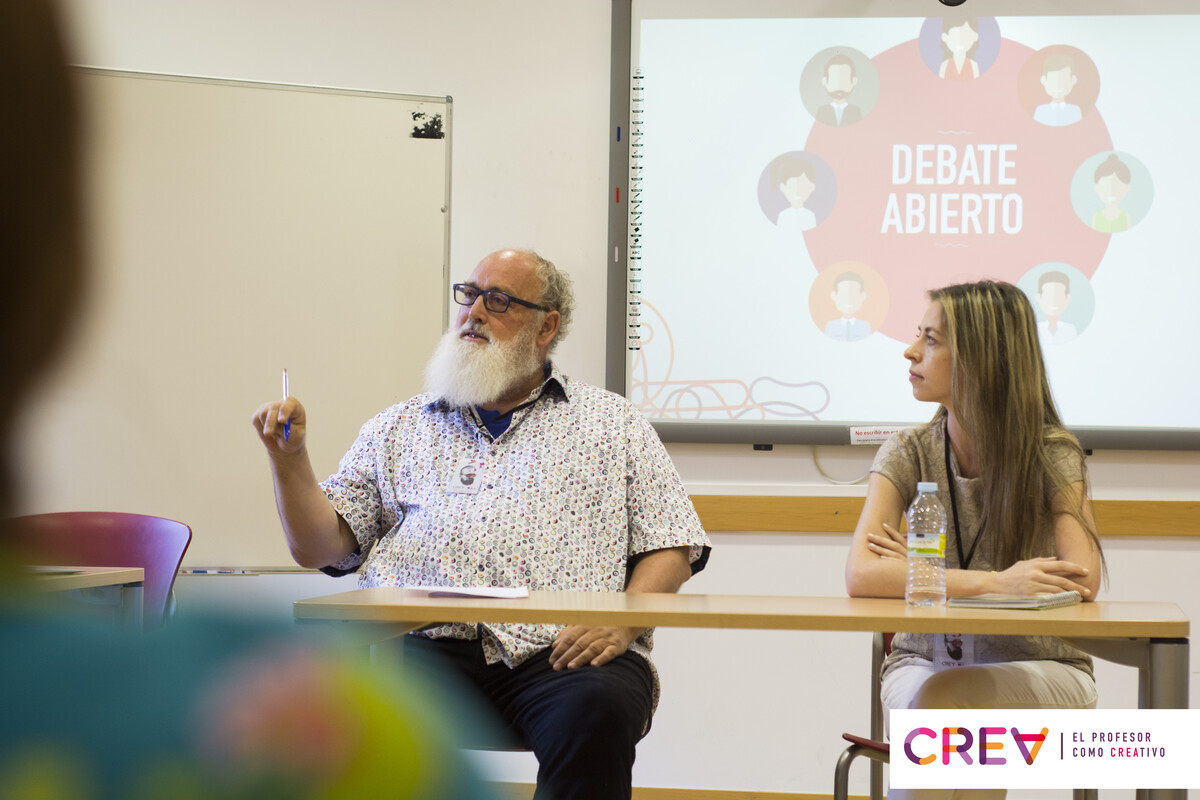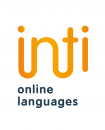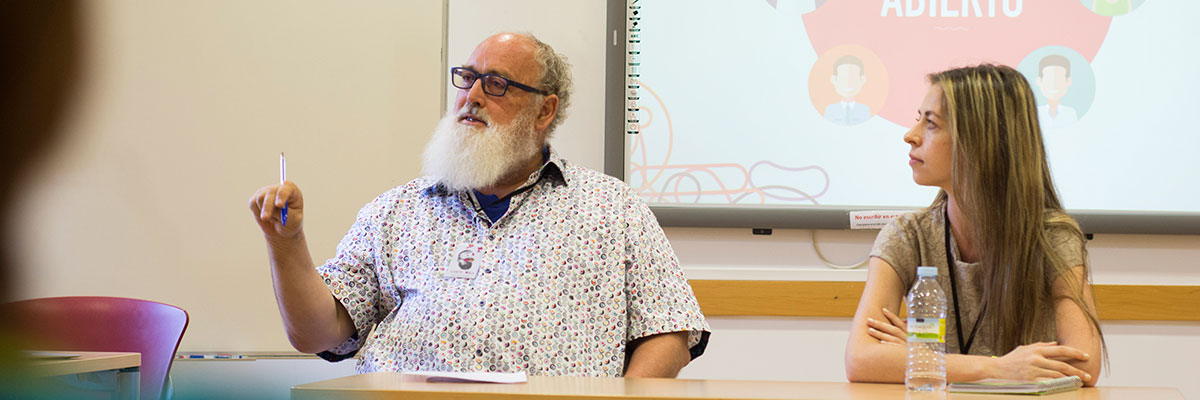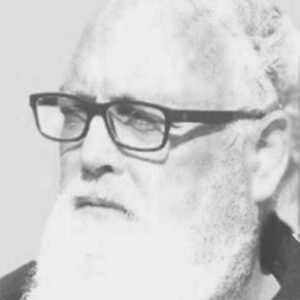Adapting educational materials to the teacher´s profile
What are you working on right now?
Right now, I dedicate a lot of time to analyzing different teacher profiles and studying whether teaching activities can be adapted to their different styles, be they traditional, authoritarian, approachable, leaderlike, anarchic, systematic, indifferent, distant, vocational, creative, innovative, accommodating, passionate, or inspiring… the list could go on and on.
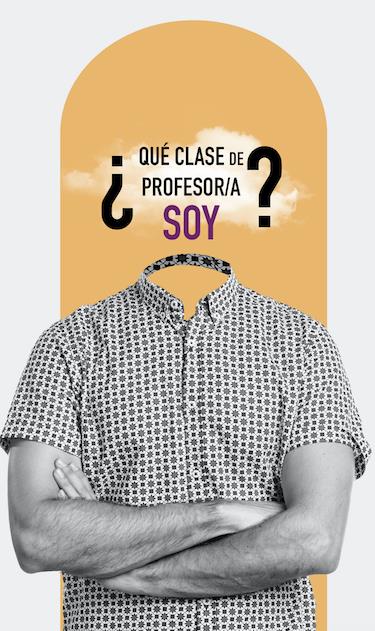
Could you explain this a bit more?
Of course. Look, when it comes to teaching Spanish as a foreign language in ELE, we talk about materials, tools, strategies, methods, activities… and we always emphasize the importance of adapting them to the characteristics of the students, their Spanish proficiency level (usually measured with the Common European Framework of Reference for Languages), their nationality (teaching someone Portuguese differs from teaching someone whose native language is Chinese and who only speaks that language), their learning objectives (Spanish for business, just for travelling to Spain, exam preparation), their age (learning ability differs between an eight-year-old and a fifty-year-old), and the personality of the students (whether they are participative or passive). We bear all this in mind when selecting appropriate materials for our lessons.
But you’re talking about the students, not the teaching staff.
You’re right. And that’s the key question that I ask myself:
Wouldn’t it make sense to adapt the materials or tools used in the classroom to the profile of the teacher as well as that of the students?
Could you give us an example?
Yes, of course. In our team, we have a teacher called Luis Jaraquemada, who besides being an exceptional educator, is also a creator of educational materials and has been involved in the world of theater. At CREA, some time ago, we designed an activity that simulated a TV show, “El Desafío” (The Challenge), where students have to do various activities such as singing, dancing, dressing up, performing tongue twisters, and improvisation. It’s one of our most successful teaching activities and Luis always puts on a memorable show, which everyone loves.

So where’s the problem?
On our training courses, we show attendees this activity, and while they always find it very interesting and entertaining, we know from feedback that few do it with their own students on their return home. It’s a bit frustrating that no one puts it into practice! Sometimes it’s because they have to follow the school syllabus, which doesn’t leave room for this type of activity. But in most cases, teachers don’t do the Desafio because they are scared to. They’re not willing to leave their comfort zone and take the plunge. It is clear that they believe their profile as a teacher and their personality don’t fit with this activity. They don’t see themselves as a Luis II!
So what can be done in these cases?
We should adapt the activity to the teacher’s profile. You can’t force teachers to improvise constantly, to act silly in front of students, or to put on a show if they’re not comfortable with it. They see Luis doing the activity and it seems perfect to them, but he’s an actor and many teachers are not. They might be inhibited by shyness or feel embarrassed to perform in front of an audience. Even if they try to hide their reluctance and accept the challenge by stepping out of their comfort zone, they might not do it very well. The key is to adapt the activity to their style or profile.
Has everything that you’re telling us been presented at some training event?
Yes, to get teachers to reflect on this we staged the following scenario. The activity was the Desafio and the premise was to teach it two very different ways. Our first teacher was dressed in a modern, young style. She started teaching in a very casual and direct manner, which was a bit chaotic.. and at times a little “in your face” (intrusive). After twenty minutes, she left. The attendees were baffled, and even more so when another teacher entered dressed discreetly and formally, with a different, calmer voice and much more serious demeanor. She continued with the same lesson, but in a completely different way. There was no more shouting, students were not allowed to speak all at once, and no errors went uncorrected (with constant grammar corrections). Instead of the previous karaoke and dancing, they now had to conjugate verbs, find synonyms or antonyms, look for rhymes, etc. It was still the same TV show format with a final prize for the winning team, but the activities were adapted to the teacher’s profile. While the first teacher was rather anarchic in her distribution of winning points resulting in quite a lot of noisy protest, the second one was very fair and objective in her verdicts when choosing who won each challenge.
And how did the teachers in this workshop react?
I think it was an interesting experience for everyone to see how an activity can be adapted not only to those it’s intended for but also to the one leading it.
Could you give us another example?
Certainly. Nowadays, everyone talks about Artificial Intelligence. In the field of education, a lot of time is devoted to learning more about this revolutionary tool. There are teachers who are up-to-date with the latest developments in new technologies, attend training courses on AI, and implement what they’ve learned with the conviction that it will be fruitful. But not everyone is like that. Many see AI as a threat, a tool that students can use to cheat during exams, or even as a danger to their job security. The idea of having to carry out activities in the classroom using this resource fills them with genuine dread. They feel that when it comes to these new resources and their utilization, they are infinitely inferior to their own students. This idea goes against the old perception that the person who teaches is the one who knows the most. I’ve taken it to an extreme, but the key question is: should someone be forced to teach in a way that doesn’t align with their beliefs or skills? I think they shouldn’t be, unless they are willing and able to change their mindset, something I see as really difficult.
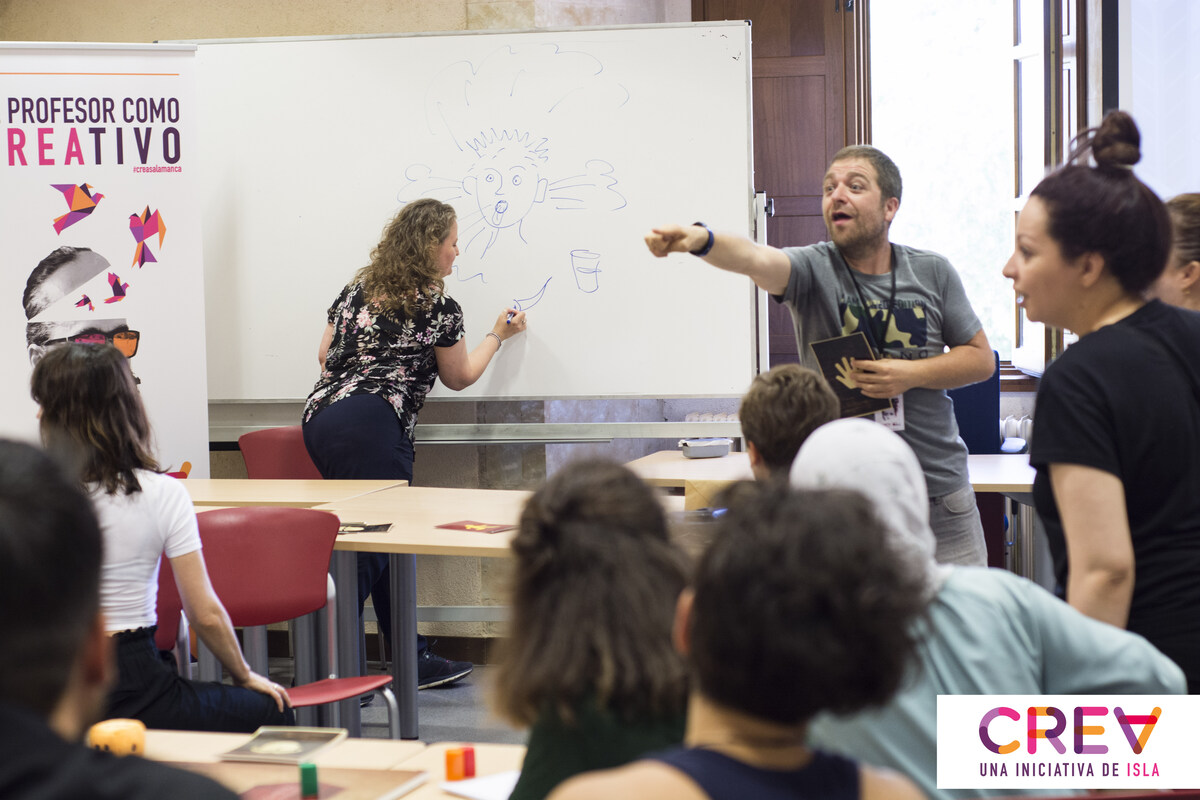
So, give us an example of an activity with two different approaches.
Let’s take storytelling as an example. Working with artificial intelligence, the tool creates the story. A brief introduction is given regarding prompting (conversation with the machine, e.g., Chat GPT), and together we establish the basis for the story (volume, type of story, characters, settings, sad or happy ending, etc.). Then, the main character of the story is defined. Through an AI application (there are many), the written story is converted into a comic or video, all in real-time. There is a broad horizon of possibilities. For example, if a story set in the 15th century with Columbus as the protagonist is chosen, we could conduct an interview with him. The AI conducts the interview, and instantly you have it on screen. Our task as teachers would be to ensure a coherent storyline, provide very specific instructions to the machine, and foster creativity.
This sounds a bit futuristic to me. So what does a teacher of a different profile do with this storytelling activity?
They forget about AI, prompting, and asking for results provided by a machine. The teacher asks their students what types of stories exist (mystery, science fiction, romance, etc.) and which ones interest them the most and why. They explain the basic notions needed to structure and write a story (conflict, suspense, intrigue, role, trigger, resolution, climax, plot twists, etc.). The students are then divided into working groups and asked to write a short story. The texts shouldn’t be too long so that they can work with all of them. Once they are completed a student from each group reads the story they have written. Together, they discuss the quality of each story and provide suggestions for improvement. It’s a fantastic exercise to create and define the characters: with adjectives, comparisons like “he’s like…” or even attempting to draw them. They also work on choosing a suitable title for their story and designing an image that best represents their new creation. Everyone votes on which story is the best and they are awarded a prize. Importantly, we recommend letting the students choose which one they like most without teacher input. Deciding which story is best is subjective, and we can always run into trouble explaining why one should win over the other.
But there’s a world of difference between these two ways of doing these activities.
Exactly, and changing a teacher’s character and teaching personality which has evolved over many years is extremely difficult and not necessarily desirable. These two approaches are completely different and each, in my opinion, is very respectable. We can’t demonize someone for being old-school or not being overly cheerful.
Thank you very much for the interview and best of luck to CREA and Profesores Creativos.
It’s been a pleasure.
P.S.
While I don’t agree with everything he says, I find this article by Swedish teacher Inger Enkvist on changes in teaching models very interesting.
https://elpais.com/elpais/2018/07/17/eps/1531826084_917865.html
